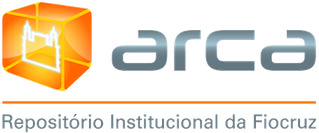Please use this identifier to cite or link to this item:
ACTIVITY OF MEFLOQUINE AND MEFLOQUINE DERIVATIVES AGAINST ECHINOCOCCUS MULTILOCULARIS
Drug repurposing
HPLC
Structure activity relationship
Treatment
Alveolar echinococcosis
Author
Rufener, Reto
Ritler, Dominic
Zielinski, Jana
Dick, Luca
Silva, Emerson Teixeira da
Araujo, Adriele da Silva
Joekel, Deborah Elisabeth
Czock, David
Goepfert, Christine
Moraes, Adriana Marques
Souza, Marcus Vinicius Nora de
Müller, Joachim
Mevissen, Meike
Hemphill, Andrew
Lundström-Stadelmann, Britta
Ritler, Dominic
Zielinski, Jana
Dick, Luca
Silva, Emerson Teixeira da
Araujo, Adriele da Silva
Joekel, Deborah Elisabeth
Czock, David
Goepfert, Christine
Moraes, Adriana Marques
Souza, Marcus Vinicius Nora de
Müller, Joachim
Mevissen, Meike
Hemphill, Andrew
Lundström-Stadelmann, Britta
Affilliation
Institute of Parasitology. Department of Infectious Diseases and Pathobiology. Vetsuisse Faculty. University of Bern. Länggassstrasse, Bern, Switzerland.
Institute of Parasitology. Department of Infectious Diseases and Pathobiology. Vetsuisse Faculty. University of Bern. Länggassstrasse, Bern, Switzerland.
Division of Pharmacology and Toxicology. Vetsuisse Faculty. University of Bern. Länggassstrasse. Bern, Switzerland.
Institute of Parasitology. Department of Infectious Diseases and Pathobiology. Vetsuisse Faculty. University of Bern. Länggassstrasse, Bern, Switzerland.
Fundação Oswaldo Cruz. Instituto de Tecnologia em Fármacos (Farmanguinhos). Rio de Janeiro, RJ, Brasil.
Fundação Oswaldo Cruz. Instituto de Tecnologia em Fármacos (Farmanguinhos). Rio de Janeiro, RJ, Brasil.
Institute of Parasitology. Vetsuisse Faculty. University of Zurich. Winterthurerstrasse, Zurich, Switzerland.
Department of Clinical Pharmacology and Pharmacoepidemiology. University of Heidelberg. Im Neuenheimer Feld, Heidelberg, Germany.
Institute of Animal Pathology COMPATH. Department of Infectious Diseases and Pathobiology. Vetsuisse Faculty. University of Bern. Länggassstrasse, Switzerland.
Fundação Oswaldo Cruz. Instituto de Tecnologia em Fármacos (Farmanguinhos). Rio de Janeiro, RJ, Brasil.
Fundação Oswaldo Cruz. Instituto de Tecnologia em Fármacos (Farmanguinhos). Rio de Janeiro, RJ, Brasil.
Institute of Parasitology. Department of Infectious Diseases and Pathobiology. Vetsuisse Faculty. University of Bern. Länggassstrasse, Bern, Switzerland.
Division of Pharmacology and Toxicology. Vetsuisse Faculty. University of Bern. Länggassstrasse. Bern, Switzerland.
Institute of Parasitology. Department of Infectious Diseases and Pathobiology. Vetsuisse Faculty. University of Bern. Länggassstrasse, Bern, Switzerland.
Institute of Parasitology. Department of Infectious Diseases and Pathobiology. Vetsuisse Faculty. University of Bern. Länggassstrasse, Bern, Switzerland.
Institute of Parasitology. Department of Infectious Diseases and Pathobiology. Vetsuisse Faculty. University of Bern. Länggassstrasse, Bern, Switzerland.
Division of Pharmacology and Toxicology. Vetsuisse Faculty. University of Bern. Länggassstrasse. Bern, Switzerland.
Institute of Parasitology. Department of Infectious Diseases and Pathobiology. Vetsuisse Faculty. University of Bern. Länggassstrasse, Bern, Switzerland.
Fundação Oswaldo Cruz. Instituto de Tecnologia em Fármacos (Farmanguinhos). Rio de Janeiro, RJ, Brasil.
Fundação Oswaldo Cruz. Instituto de Tecnologia em Fármacos (Farmanguinhos). Rio de Janeiro, RJ, Brasil.
Institute of Parasitology. Vetsuisse Faculty. University of Zurich. Winterthurerstrasse, Zurich, Switzerland.
Department of Clinical Pharmacology and Pharmacoepidemiology. University of Heidelberg. Im Neuenheimer Feld, Heidelberg, Germany.
Institute of Animal Pathology COMPATH. Department of Infectious Diseases and Pathobiology. Vetsuisse Faculty. University of Bern. Länggassstrasse, Switzerland.
Fundação Oswaldo Cruz. Instituto de Tecnologia em Fármacos (Farmanguinhos). Rio de Janeiro, RJ, Brasil.
Fundação Oswaldo Cruz. Instituto de Tecnologia em Fármacos (Farmanguinhos). Rio de Janeiro, RJ, Brasil.
Institute of Parasitology. Department of Infectious Diseases and Pathobiology. Vetsuisse Faculty. University of Bern. Länggassstrasse, Bern, Switzerland.
Division of Pharmacology and Toxicology. Vetsuisse Faculty. University of Bern. Länggassstrasse. Bern, Switzerland.
Institute of Parasitology. Department of Infectious Diseases and Pathobiology. Vetsuisse Faculty. University of Bern. Länggassstrasse, Bern, Switzerland.
Institute of Parasitology. Department of Infectious Diseases and Pathobiology. Vetsuisse Faculty. University of Bern. Länggassstrasse, Bern, Switzerland.
Abstract
The cestode E. multilocularis causes the disease alveolar echinococcosis (AE) in humans. The continuously proliferating metacestode (larval stage) of the parasite infects mostly the liver and exhibits tumor-like growth. Current chemotherapeutical treatment options rely on benzimidazoles, which are rarely curative and have to be applied daily and life-long. This can result in considerable hepatotoxicity and thus treatment discontinuation. Therefore, novel drugs against AE are urgently needed. The anti-malarial mefloquine was previously shown to be active against E. multilocularis metacestodes in vitro, and in mice infected by intraperitoneal inoculation of metacestodes when administered at 100 mg/kg by oral gavage twice a week for 12 weeks. In the present study, the same dosage regime was applied in mice infected via oral uptake of eggs representing the natural route of infection. After 12 weeks of treatment, the presence of parasite lesions was assessed in a liver squeeze chamber and by PCR, and a significantly reduced parasite load was found in mefloquine-treated animals. Assessment of mefloquine plasma concentrations by HPLC and modeling using a two-compartment pharmacokinetic model with first-order absorption showed that >90% of the expected steady-state levels (Cmin 1.15 mg/L, Cmax 2.63 mg/L) were reached. These levels are close to concentrations achieved in humans during long-term weekly dosage of 250 mg (dose applied for malaria prophylaxis). In vitro structure-activity relationship analysis of mefloquine and ten derivatives revealed that none of the derivatives exhibited stronger activities than mefloquine. Activity was only observed, when the 2-piperidylmethanol group of mefloquine was replaced by an amino group-containing residue and when the trifluoromethyl residue on position 8 of the quinoline structure was present. This is in line with the anti-malarial activity of mefloquine and it implies that the mode of action in E. multilocularis might be similar to the one against malaria.
Keywords
Anti-malariaDrug repurposing
HPLC
Structure activity relationship
Treatment
Alveolar echinococcosis


Share